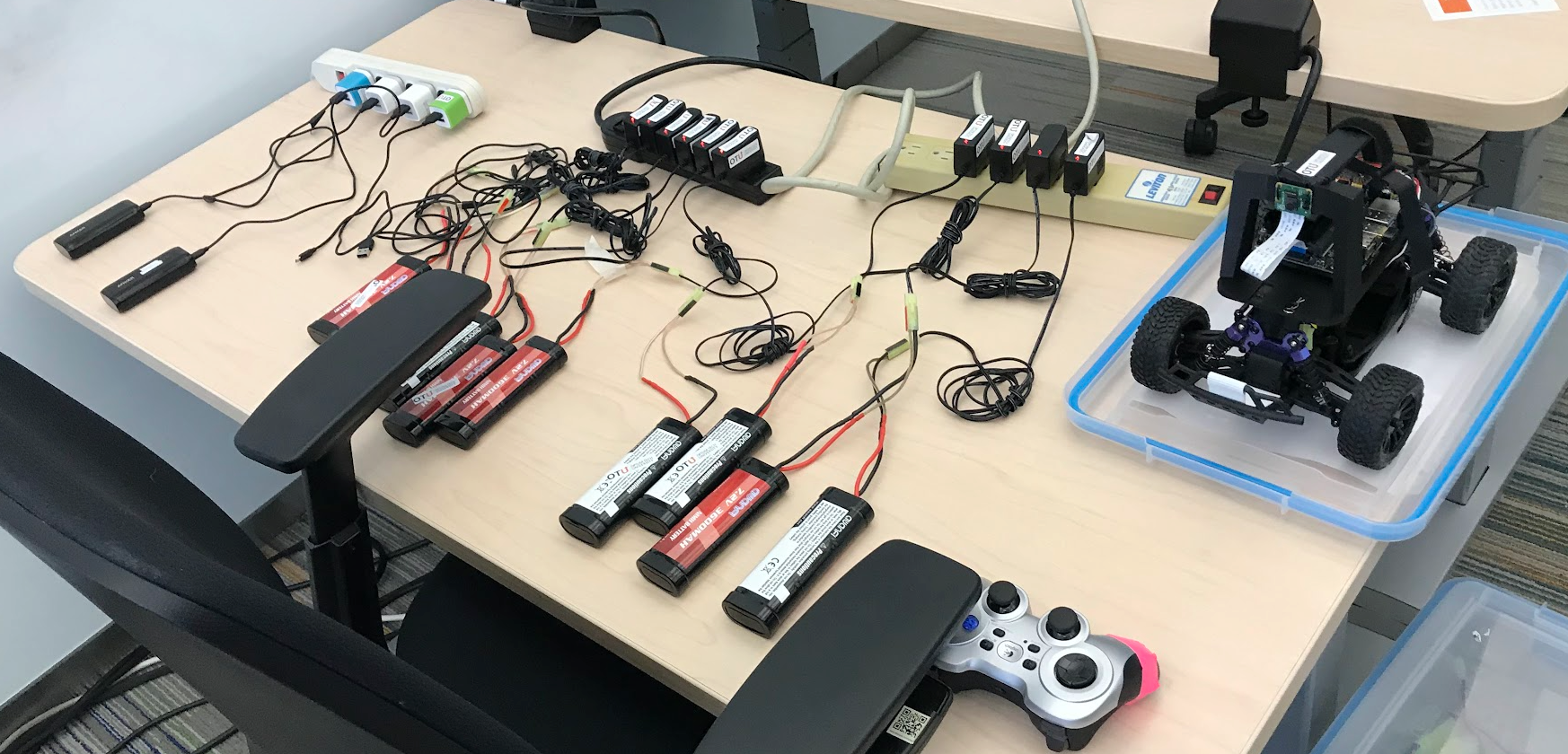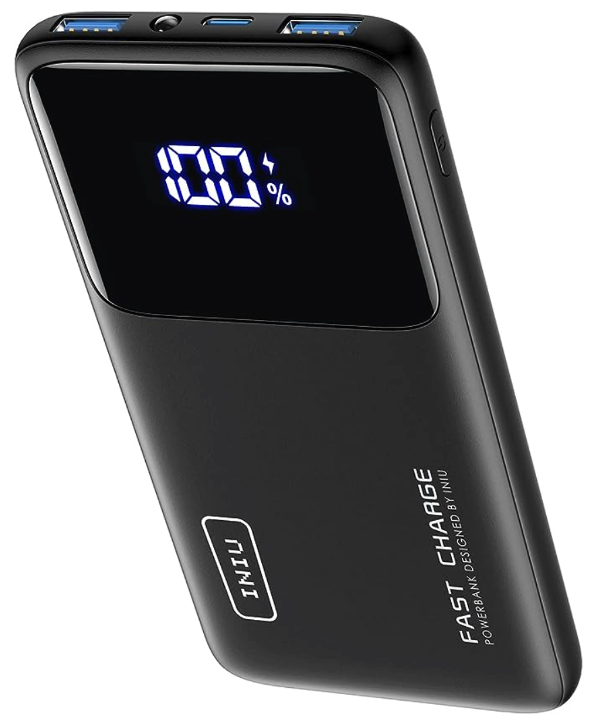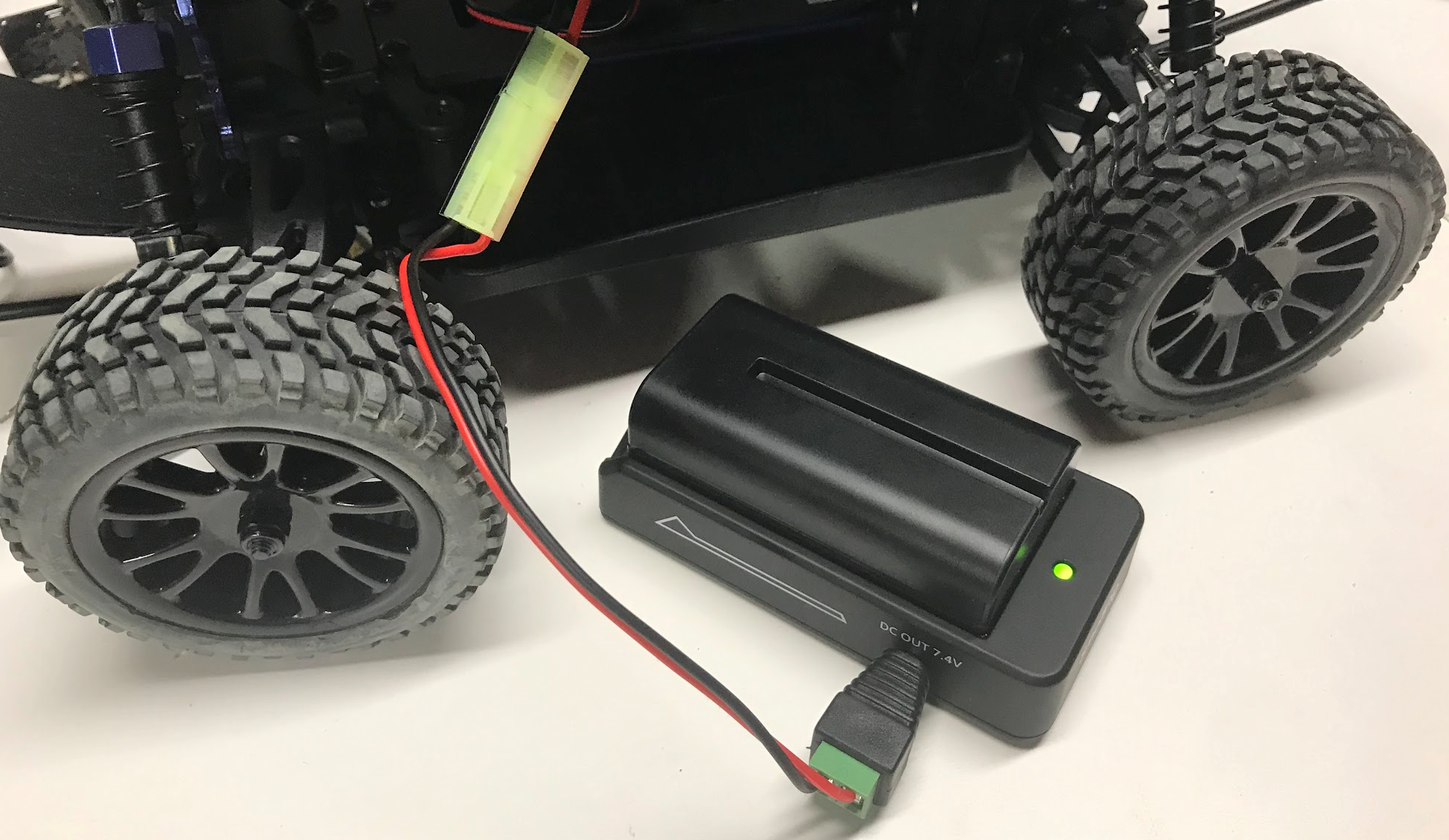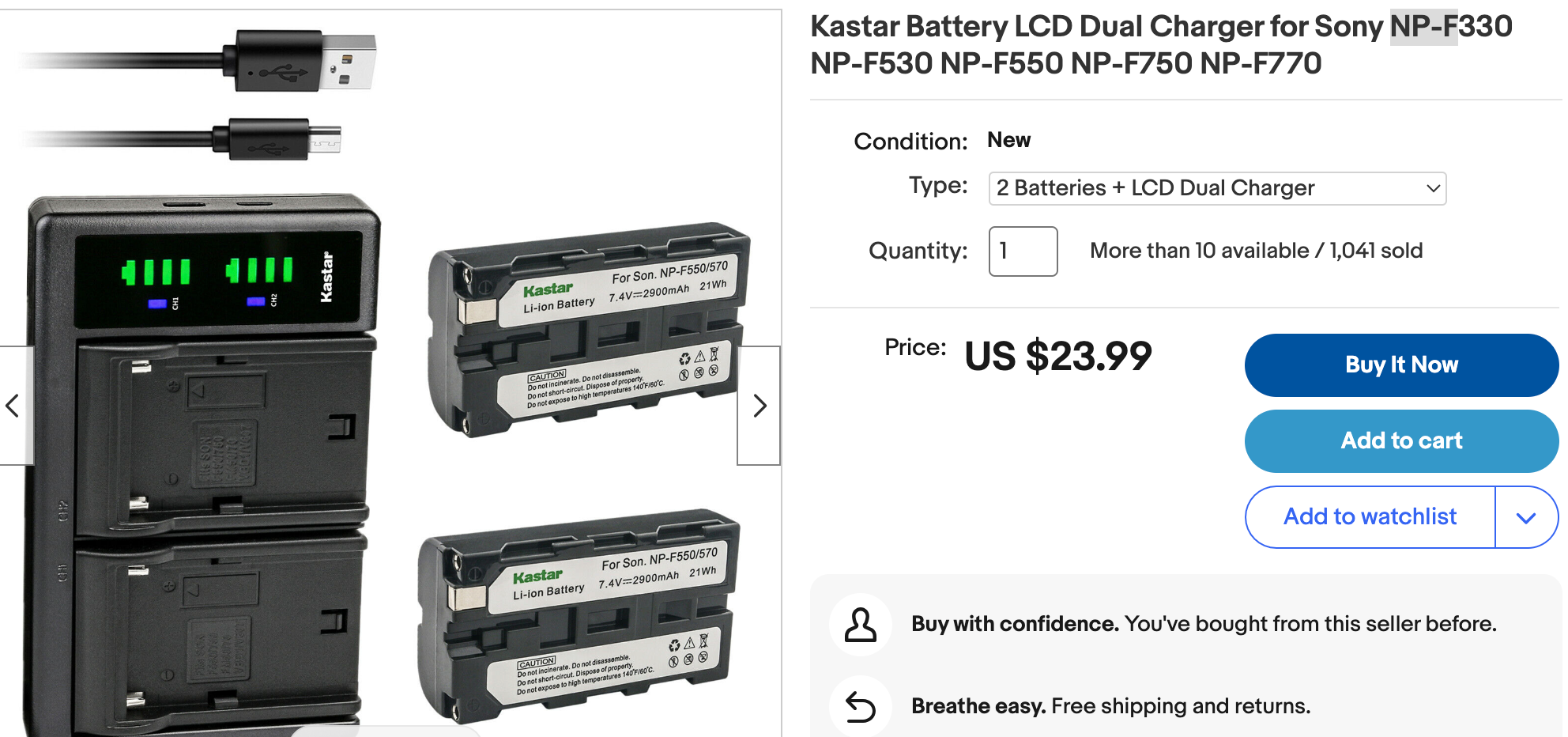Battery Options¶
Dual Batteries¶
In general, most of our cars use two separate batteries:
- One battery for the power to the drive motors and steering servos
- One battery to power the single-board computer and power the sensors like the camera
Getting batteries charged before each event requires some strong organizational skills. Although the LiPo batteries retain a charge for a long time, the RC car batteries must be fully charged the night before each event.

18650 Standards¶
The 18650 is a standard cell size for 3.7 volt Lithium batteries (18mmX65mm). The problem is that if these batteries go below 3.2 volts they become damaged and can't be recharged. This is why you should never use these batteries without charge protection circuits.
A typical 18650 battery produces 4.2 V when fully charged with a nominal voltage of 3.7 V.
The TP4056 is a low-cost charger chip for one (1) cell. If you plan to charge multiple cells simultaneously, each charging slot for a cell needs its own TP4056.
Warning
Never connect a 5V power supply directly to a lithium cell. Even though the cells have built-in protection, they are not chargers. It is the last line of protection to prevent catastrophic failures by disconnecting the cell under abnormal conditions - unless the protection does not work.
Boost and Buck Converters¶
These are low-cost DC-to-DC voltage converters that allow you to use standard 3.7-volt cells that drive a 5-volt system. Boost converters increase the voltage and buck converters lower the voltage. You can purchase basic devices for $2, but fancier versions have displays that show both the input and output voltages.
Computer Batteries¶
We initially used several Ankar 2,000 milliamp-hour batteries for powering the cars. The batteries would last for the entire single-day events as long as they were charged before the event and not used to power the cars when not running on the tracks. The batteries typically could be recharged over 100 times before they had to be replaced.

Many teams use larger (and heavier) 10,000 milliamp-hour Lithium batteries. These are especially useful when learning to drive around the track. Teams also loved the fact that the INIU batteries showed the percent power remaining.
The INIU Portable Charger, Slimmest 10000mAh 5V/3A Power Bank is also a popular choice since they only cost about $19.
Traditional RC Car Batteries¶
The traditional RC car batteries are based on standard "Safe" battery chemistry that can be fully drained and are not a strong fire hazard. The problem is that they take a long time to charge (typically overnight) and they don't store a lot of power so they typically only last a few minutes at high speed.
Camera LiPo Batteries¶

A newer option is lower-cost rechargeable camera batteries that are built around the Sony NP-F standard. These are widely regarded as safe by the camera industry and there are many low-cost smart batteries and chargers available for around $10 each. They produce a stable 7.4-volt output that is perfect for our DC motors in RC cars.
The only consideration is getting cables that convert the batteries to use the RC car standards. I have made my own cables, but the quality of the connectors on the Donkey Car still leaves some things to be desired. The ends of the connectors are easy to pull off. I think that soldering a new barrel connector on all the RC cars might be another option.
The one other challenge is trying to find a low-cost connection plate. Right now the lowest cost plate is about $15 on Adafruit. I hope we can find lower-cost options or use a 3D printer to print our own.

Adafruit Camcorder Battery Holder/Adapter for Sony NP-F750 w/ DC Jack $15
Two batteries and charger on e-Bay for $23
3D Print Thingiverse NP-F Battery Wall Mount with Soft Lock
Neewer Battery Connection Plate for $27 on Amazon
The camera industry has also developed standard 7.4-volt battery packs that enclose low-cost 18650 battery cells. These standards have electronics built in to protect from drainage. Here is a list of parts that were recommended by the NVIDIA Jetson Hacks team:
- SmallRig NP-F Battery Plate Adapter
- Generic NP-F 550 2 Cell Battery
- Generic NP-F 750 4 Cell Battery
- Antigravity Micro-Start XP-1 Battery
- Artman NP-F550 Battery and Dual USB Charger for Sony NP F550, F570, F530, F330, F970, F960, F750, F770, CCD-SC55, TR516, TR716, TR818, TR910 (2-Pack 2900mAh) - great deal - two batteries and charger for $28.99
- Kastar Battery LCD Dual Charger for Sony NP-F330 NP-F530 NP-F550 NP-F750 NP-F770 - - two batteries and charger for $28.99
Battery Cables¶
Several participants used long battery cables with a small wire gauge. These cables caused voltage drops that made the cars stop working. We told all teams to use short 8-inch battery cables and most of these problems went away. We strongly suggest you build your own cables and use 18-gauge wire.
Connectors and Crimping Tool¶
7.4 Volt LiPo Batteries¶
You can also purchase "raw" 7.4-volt LiPo batteries that are designed to work with RC cars. I have not purchased these directly so I can't attest to their reliability or safety. I will say that the power connector on them appears to be incompatible with our current cars.
References¶
NVIDIA Jetson on Battery Power - a nice video by